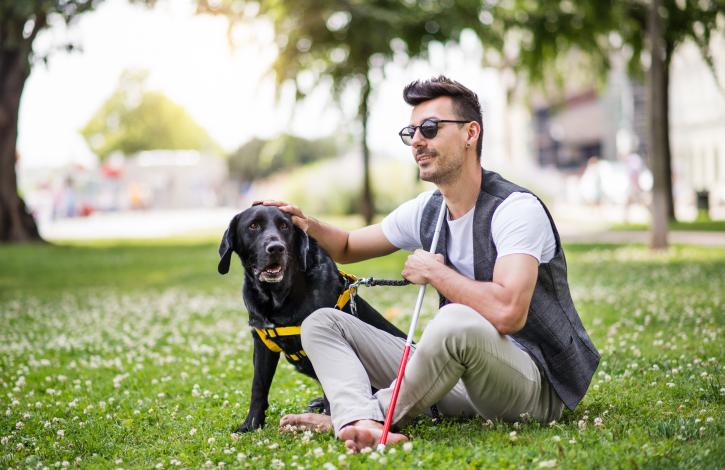
New HUD guidance on assistance animals
On January 28th the Department of Housing and Urban Development (HUD) issued additional guidance on how housing providers can comply with the Fair Housing Act when assessing a request for an assistance animal by an individual with a disability. For quite some time housing providers have requested HUD to provide guidance on assistance animal compliance issues with which the industry has struggled. Such as, what documentation can be requested to confirm an individual has a disability or the disability related need for an assistance animal, does an assistance animal certification purchased online have to be accepted, what type of animal qualifies as an assistance animal, and how many animals must be permitted? HUD’s new Assistance Animal Guidance addresses these issues and provides a step-by-step set of best practices to comply with the Fair Housing Act.
By way of background, the Fair Housing Act prohibits discrimination in housing against an individual with a disability. A disability is defined as a physical or mental impairment that substantially limits one or more major life activities. The Fair Housing Act requires housing providers to permit a change or exception to a rule, policy, practice, or service when necessary to provide an individual with a disability equal access to use and enjoy the housing. This is referred to as a request for a reasonable accommodation. A common request is to make an exception to a pet policy to permit an assistance animal. An assistance animal is an animal that does work, performs tasks, assists or provides therapeutic emotional support because of a disability. Assistance animals are not pets and no fee or deposit can be charged for an assistance animal. If not readily apparent, a housing provider can request confirmation that the individual has a disability and the disability related need for an assistance animal.
HUD’s new guidance consists of two parts. The first provides step-by-step best practices guidance on assessing an individual’s request for an assistance animal. The second part provides guidance on documenting an individual’s need for an assistance animal. Here are some of the highlights:
- HUD recommends starting the assessment process by determining if the animal is a service animal under the American’s with Disabilities Act (ADA). A service animal is a dog that is individually trained to do work or perform tasks for the benefit of an individual with a disability. An example is a guide dog for an individual who is blind. If the dog qualifies as a service animal under the ADA, the dog is an assistance animal under the Fair Housing Act.
- If the animal is not a service animal, the housing provider would need to assess whether the animal is an assistance animal under the Fair Housing Act. Does the individual have a disability and is there a disability related need for the animal?
- If it is readily apparent that the individual has a disability and there is a disability related need for the animal the housing provider cannot require documentation.
- If not readily apparent, the housing provider can request documentation that the individual has a disability and the disability related need for the animal. For example, it may not be readily apparent that an individual with anxiety, post- traumatic stress disorder, or depression has a disability and requires an assistance animal to provide emotional support.
- Documentation of a disability and the disability related need for the animal can be provided by a licensed health care professional. Health care professionals include, but are not limited to, a physician, optometrist, psychiatrist, psychologist, physician’s assistant, nurse, or nurse practitioner. The housing provider cannot require the health care professional’s documentation be provided on a certain form or that a diagnosis or detailed information regarding the disability be provided.
- What about websites that sell certificates, registrations or licensing documents for assistance animals to anyone who answers a few questions and pays a fee? HUD confirmed that housing providers have a right to reliable documentation that an individual has a disability and the disability related need for the assistance animal. The guidance provides, “In HUD’s experience such documentation from the internet is not, by itself, sufficient to reliably establish that an individual has a non-observable disability or disability-related need for an assistance animal.” However, HUD did note that many legitimate health care professionals deliver services remotely, including the internet.
- Generally, an assistance animal will be an animal commonly kept in households. An animal commonly kept in households are a dog, cat, small bird, rabbit, hamster, gerbil, other rodent, fish, turtle, or other small domesticated animal that is traditionally kept in the home for pleasure rather than for commercial purposes. HUD considers reptiles, barnyard animals, monkeys, kangaroos, and other non-domesticated animals as “unique animals”. If the individual is requesting a unique animal, the requester has the burden to show the disability related need for that specific animal or type of animal. The example HUD provides is a monkey trained to retrieve items and switch lights on and off for an individual with a spinal cord injury.
- The number of assistance animals depends upon the number of people living together and the type(s) of disabilities. An individual may require more than one assistance animal and more than one resident may have a disability requiring an assistance animal. A housing provider should follow the same decision making process for each assistance animal request.
- A housing provider can deny a request for an assistance animal if the specific animal poses a direct threat to the health or safety of other individuals or whose tenancy would cause substantial physical damage to the property which cannot be eliminated or reduced by the requester to an acceptable level.

